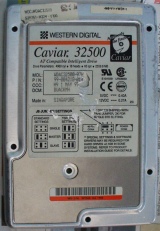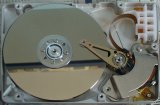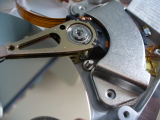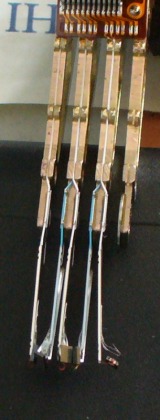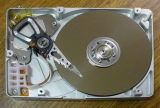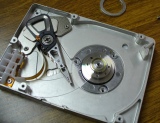Dissecting Hard Disks for Fun and Profit
Reuse, reuse, reuse.
Contents
Once upon a time, when the world was young and we were building a lab for the local FSUG, we used to get quite some obsolete hardware for free, to be sorted and used or discarded as fit. Among such gifts, we found two Western Digital hard disks from the late 1990s Caviar series and proceeded to try them. They both failed with the typical ominous noise of the Data Eating Monster Having a Nice Snack and I took them from the discard pile with a plan to open them and take a peek at how HDs were made.
Being hard disks with no user serviceable parts inside and all that stuff, they of course had torx screws, and I didn't have any such key at home, so I just left them in a cupboard and forgot the whole issue. Fast forward a few years, I found a set of torx keys in a supermarket, bought them just in case, and, on a boring indoor weekend afternoon with my SO (After we had exausted other unspeakable (Yes, that may have to do with Elders evocation) activities) remembered about the hard disks.
The Hard (Disk) P0rn Section You've Been Looking For
First we removed the electronics board, removed all of the external screws ripped away the sealing strip from the opening and then proceeded with the fun part.
The internals were clean just as we expected, with no sign of tampering; we played a little with the head arm, hearing just a bit of unhealty noise, and then proceeded to look for further screws to dismantle the components. This is when we noticed something odd: the magnet mount was kept in position by just one screw, the other one was loose between the head arm and the platters, giving a very good reason for the noisy behaviour. Even worse, as we removed the magnets, we found out that even the screw mount was quite cleanly cut from the metal case, and we really started to wonder what unspeakable horrors had this disk suffered.
Removing the head arm showed the arms themselves in quite a sorry state, but that may have been helped by some carelessness on our part.
We moved on to the platters, tried to hit them with various items to hear their sound, and finally estracted the motor and tried with some success to let it move with quite careless application of 4x1.2V from a battery pack to random contacts.
A few days later at the LIFO we did the same to the other disk; this one didn't have the sealing strip round the border, but it didn't show other signs of opening, and was in better conditions overall, with all of the screws in their rightful places and the heads in a saner state.
... 5. Profit!
Magnets
The nice strong magnets and their mount are currently used with a leftover nail from a FIRA drawer as a desktop toy, but will soon find some better use.
Purse Mirror
I've been looking for a smallish mirror for my "very womanly handbag" (think woman purse + nerd pockets, pour in a student backpack and shake a little. Yes, I have [insert item here]. No, it's not by chance.) and the perfectly smooth surface of the top platters looks like it's going to perfectly fit the need.
I'm probably going to build a telescopic rod mount, possibly with some led, to be able to use it for the main mirror usecase: looking behind computers and similar obstacles.
Looking for ideas...
I'm still looking for mad science uses for the other components.
